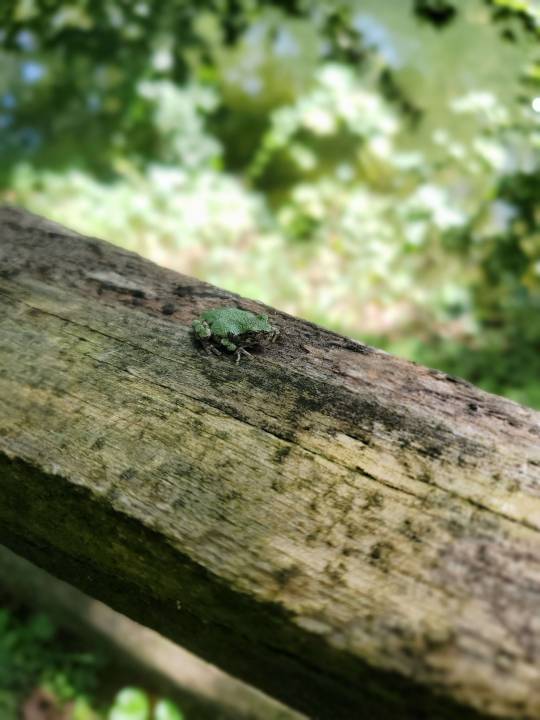#gray treefrogs
Note
Favorite frog?
Probably the gray tree frog! They’re really common in my area and they’re super neat. They can somewhat change colors, which is why their scientific name is Dryophytes versicolor (versicolor means changing color). Their color range includes whites, greens, grays, and dark grays. They also have cool bright yellow markings under their legs
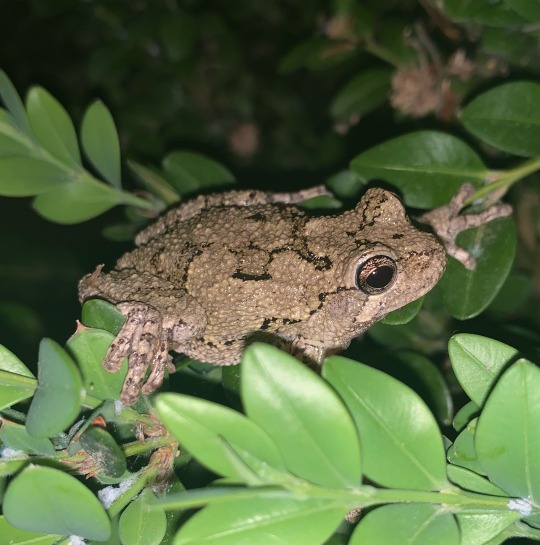
Pictured here is the Cope’s gray tree frog, which is super closely related to the gray tree frog and are really only distinguishable by their calls and range. They are identical in every other way. These are the ones I find by my house, and they don’t have versicolor in their scientific name, but they can change colors just like the gray tree frog. Tbh I really just wanted to share the versicolor fact
#frog blog#frog blogging#frog#frogs#frogposting#amphibian#amphibians#frogblr#herpetology#tree frog#gray treefrogs#gray tree frog#gray treefrog#copes gray tree frog
113 notes
·
View notes
Photo



This bug-eyed beauty is the gray-eyed frog [Opisthothylax immaculatus], a small tree frog native to Cameroon, Nigeria, Equatorial Guinea, Gabon, and parts of the Democratic Republic of the Congo. These frogs are foam-nest builders. Pairs produce clutches of 6-10 eggs overhanging water sources, which the female then kicks with her hind legs until they form a foamy mass. After 2 to 3 weeks the eggs hatch, and the tadpoles fall into the water below. This captive specimen was photographed by Greg F.M. Jongsma.
949 notes
·
View notes
Text
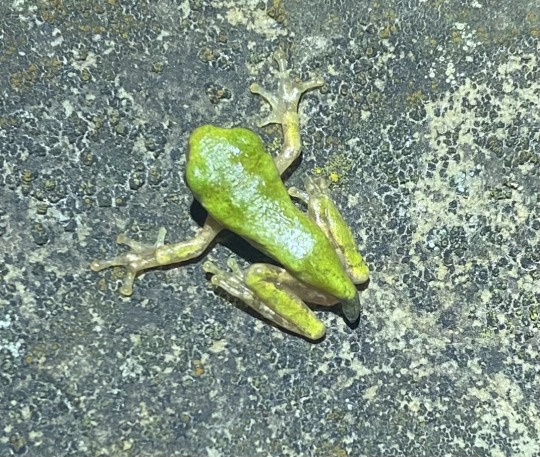
a little brand new treefrog from the other night.. u can still see the stump of a tail !
#txt#amphibians#frog#gray treefrog#frogblr#yes he is a green gray treefrog. it happens#he was so small.. sat perfectly on my fingertip. then launched himself off it ofc#this is in PA by the way. we have treefrogs here believe it or not :D
47 notes
·
View notes
Text
For most people, discovering a frog living in your fence post would make you feel either kind of creeped out or kind of charmed. For one guy in Australia, it was a challenge: He decided to make it the sweetest pad possible. In a now-viral two-minute TikTok video, he designs and 3-D-prints his frog an elaborate home. He keeps adding features until the lucky amphibian has an attached pool, a downstairs mating pond with a tadpole ramp, and a predator-proof safe room.
This frog house was gleefully over the top, practically engineered to go viral with its renovations for “increased ribbit amplification” and a brushtail possum who occasionally likes to drink water from the pool. But frog houses as an idea are worth taking seriously. Animals don’t need much to get cozy in our backyards and balconies, as the world has already learned with birds. One ecologist found that bird feeding goes back at least 3,500 years; in the 18th century, the facades of Ottoman palaces and mosques were fitted with structures to house birds, who were seen as both holy and lucky. Birdhouses and bird feeders are so thoroughly part of human culture that purple martins in eastern North America nest almost exclusively in houses made by humans.
But why do birds get all the love? Building a little house for a frog to shelter in, or a pond where eggs can hatch and tadpoles can grow, is a great idea if you’ve got a place to put it. Even a tiny pondlet in a container on a patio can raise a whole amphibian generation. You can provide meaningful help to animals that need it, and participate in species conservation at home with very few downsides. Honestly, creating a backyard pond is probably better than putting up a birdhouse. Will someone please think of the urban amphibian?
Birds are beautiful, and they sing—it is no wonder we have long welcomed them into human spaces. At some level, it doesn’t even feel like sharing space, because birds live up high, in trees and on rooftops and telephone wires. They get the sky, and we get the land. Seems fair. But frogs? Inviting them into the garden can make you feel uneasy. Whereas birds are “so obvious and so charismatic,” Erin Sauer, an ecologist at the University of Arkansas who has studied both urban birds and urban amphibians, told me, frogs are “cryptic” and “camouflaged”—“they don't want you to find them.” Many frogs in temperate zones, including much of the United States, are brown and green, and more active at night. They are a subtle pleasure, compared with a crimson cardinal or an iridescent hummingbird.
It might not be obvious that some amphibians are probably living not too far from you, in part because they stay hidden. Frogs, newts, and salamanders exist in most cities. In New York, you can hear gray tree frogs call in Brooklyn Heights. In Los Angeles, the canyons of Griffith Park are filled with bumpy western toads. According to the biodiversity tracker iNaturalist, 28 species of amphibians have been spotted in Columbus, Ohio, including the colorful eastern red-backed salamander.
But amphibian populations are declining. Forty-one percent of amphibians are threatened with extinction, in part because of an ongoing fungal pandemic that as of four years ago had driven an estimated 90 species extinct. Frogs also have habitat needs that are “so specific,” Sauer said: They must have both water and land to complete their life cycle.
Still, if there are frogs near your home and some relatively protected route for them to travel, and you build a pond with vegetation around it, they will likely move in. An analysis of dozens of projects that created ponds for amphibians found that in every study, frogs showed up at some or all of the ponds. And many of the studies found that the number of species was similar or higher in created ponds than in natural ponds. Not all of those ponds were in cities, but another study looked at ponds in Portland, Oregon, and found similar results. The biggest predictor of how well a pond attracted frogs wasn’t whether it was real or fake, but the amount of plants growing in and around it.
Frog ponds aren’t very common residential features (yet), but it isn’t like no one thinks of amphibian-kind when designing their outdoor space. The U.S. Department of Agriculture has some advice for creating effective backyard conservation ponds for native wildlife. There are any number of guides online to building toad abodes, frog hotels, and general-purpose backyard frog ponds. Some gardeners install toad houses, hoping that a toad will move in and pay rent by eating common garden pests. You can even buy handmade toad houses on Etsy. And naturally, TikTok Frog House Guy is now selling frog houses as well.
It can be simple, and cheap, to invite amphibians over to your place. Tree frogs love to hang out inside vertical tubes, so simply pounding a few PVC pipes into the ground can create a little frog hotel. Building a cozy house for toads can be as easy as half-burying a broken pot. Making a frog pond is as straightforward as digging a hole; setting a commercial pond liner, an old bathtub, or even a plastic storage tote in the hole; and filling it with rocks and water. “You don’t need to 3-D-print some elaborate frog mansion,” Sauer told me.
I had called Sauer to set my mind at ease on one point: Would creating an artificial house or pond also create a transmission point for disease? She told me it wasn’t worth worrying about. Yes, multiple frogs might move into a pond or house, and they might touch if they mate, but frogs already gather in groups naturally, whereas birds at bird feeders can congregate in unusually high numbers. Feeders can pose a disease risk to birds, Sauer said: “You have a single place with one porthole, and they stick their faces in there and chew on things. And then their friends come over and do the same thing.” A frog pond can even bring in birds, who will use it to bathe and drink—with less chance of disease transmission.
There are very few downsides to catering to your local frogs, the biggest of which is that your backyard might have more mosquitoes—mosquitoes, like frogs, breed in water. To avoid that, you either need animals that will eat all of the mosquitoes (such as dragonflies or some tadpoles) or you need to keep the water moving. A solar-powered aerator costs about $30.
It is very possible that the frogs that show up to your patio water feature won’t be critically endangered species, but that’s okay. “We want to keep common species common so they don’t decline,” Sauer said. It all helps. Providing habitat for amphibians is important, but researchers are also working on frog houses that will actually help save frogs from the fungal pathogen. These houses would be like little greenhouses: hot enough to kill the fungus but not too hot for the frog’s comfort.
Not everyone can or wants to build a frog house. But they might be interested in putting a pot full of wildflowers for pollinators on their balcony. Saving species in the 21st century isn’t just about protecting big, undeveloped parks—although we need those too. It is also about figuring out how to coexist with the many species that can thrive in the urban, suburban, exurban, and agricultural landscapes we’ve made. That we’ve shared space with birds for thousands of years proves we can do it.
There’s evidence that this is already happening, and birdhouses and frog houses are just the beginning. People are adding bee hotels and bat houses, and planting milkweed for endangered monarch butterflies to lay their eggs on. It can be dizzying to think about all the species that need help right now, but engaging in everyday conservation can also just be fun, helping to turn neighborhoods into corridors of habitat for creatures such as frogs. Our cities can be wetlands too, at least in spots. Our kids can watch tadpoles on summer days. And in the spring, we can listen to the frogs sing at dusk.
— You Should Build a Frog Pond
#emma marris#you should build a frog pond#environmentalism#ecology#wildlife conservation#history#animals#frogs#salamanders#newts#toads#gray treefrog#western toad#red-backed salamander#mosquitoes#dragonflies#ottoman empire#erin l. sauer
8 notes
·
View notes
Text


Gray Treefrog (Hyla Versicolor)
I found this lil friend on the side of a building up by a bright headlight surrounded by bugs. Mans was living his best life surrounded by a feast. We don't find these super often where I live, this is only my second time seeing a tree frog in my area! I see him nightly on this building now, I think he has a home behind a nearby shed.
4 notes
·
View notes
Text


Annual photos of cope's gray treefroglets emerging from the pond.
they are.... ᶠʳᵒᵍ
(they're about the size of my pinky nail)
29 notes
·
View notes
Text


Brown Banana Frog: Found in Western Africa, these frogs are rapidly growing endangered due to habitat destruction and the chitrid fungus. They lay their eggs in small clumps on leaves, that they then fold and glue together.
Grey Tree Frog: This North American frog is visually indistinguishable from Hyla chrysoscelis (Cope’s grey treefrog). However, their calls and pulse are slower and genetic testing has actually revealed that while H. chrysoscelis is diploid, like humans and most other vertebrate species, H. versicolor is actually tetraploid! That’s an extra pair of chromosomes! They can also tolerate freezing temperatures and change their colour in about half an hour as response to external stimulus.
6 notes
·
View notes
Text
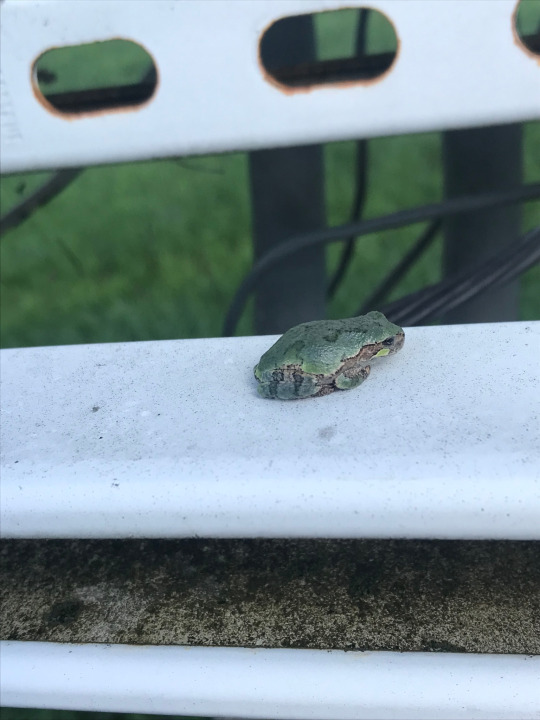
Sep 14, 2023
0 notes
Photo

Seattle Master Bath Bathroom
Inspiration for a sizable modern master bathroom remodel with flat-panel cabinets, black cabinets, gray walls, an undermount sink, quartz countertops, and white countertops. The bathroom will also have a gray floor.
0 notes
Text

It is Treefrog Tuesday 🙏🙏
#frog blog#frog blogging#frog#frogs#frogposting#amphibian#amphibians#frogblr#tree frog#treefrog#herpetology#gray tree frog#gray treefrog#herping#treefrogs#gray treefrogs
93 notes
·
View notes
Photo

Contemporary Bathroom - Bathroom
An illustration of a large, modern master bathroom with gray walls, gray floors, flat-panel cabinets, black cabinets, an undermount sink, quartz countertops, and white countertops.
#blue glass backsplash#gray bathroom#treefrog design#tree frog design#grey bathroom#floating cabinets
0 notes
Photo
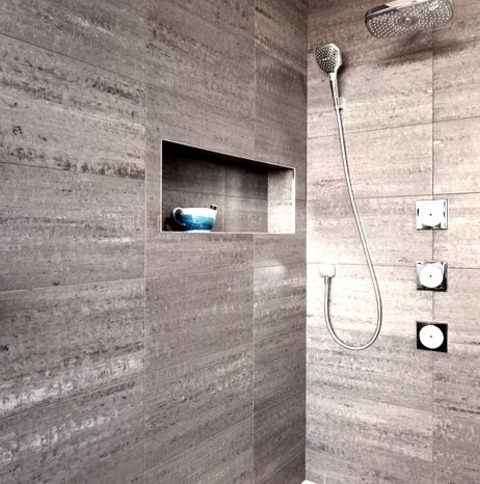
Bathroom Master Bath
Inspiration for a sizable modern master bathroom remodel with flat-panel cabinets, black cabinets, gray walls, an undermount sink, quartz countertops, and white countertops. The bathroom will also have a gray floor.
0 notes
Photo

Bathroom (Seattle)
#Bathroom - large contemporary master bathroom idea with gray floor and gray tile#black cabinets#flat-panel cabinets#gray walls#an undermount sink#quartz countertops#and white countertops. spa bathroom#treefrog design#bathroom#towel warmer#contemporary design#tree frog design
0 notes
Text


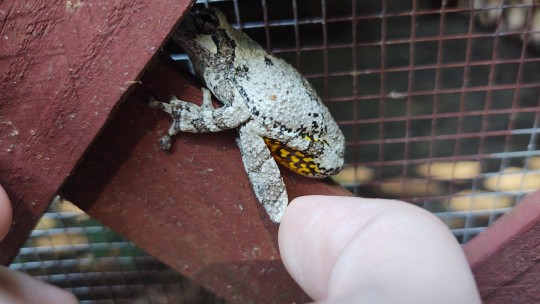
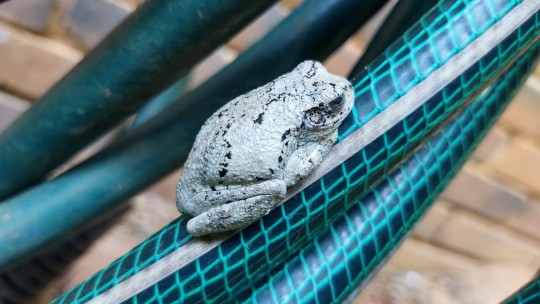

Cope's gray treefrog (Dryophytes chrysocelis)
Love how these funky dudes decided to show up after I had a herpetology class...
1 note
·
View note
Text
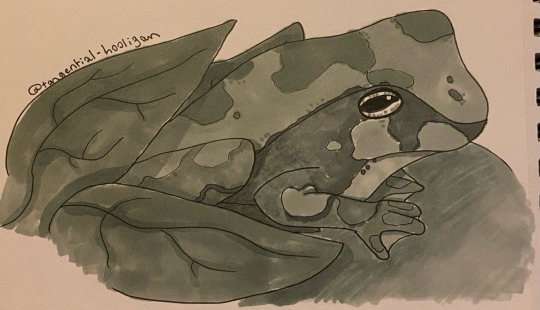
Amphibiuary 2024- Day 23: Common
a common gray treefrog in grayscale 🥺💖 i love shades of gray
#amphibiuary2024#cute frog#frog art#froggo#froggie#grayscale#ink and pen#pen and ink#alcohol markers#traditional art#tangential hooliganart#lovely lil baby boy 💖💖🥺#so gongeous
54 notes
·
View notes
